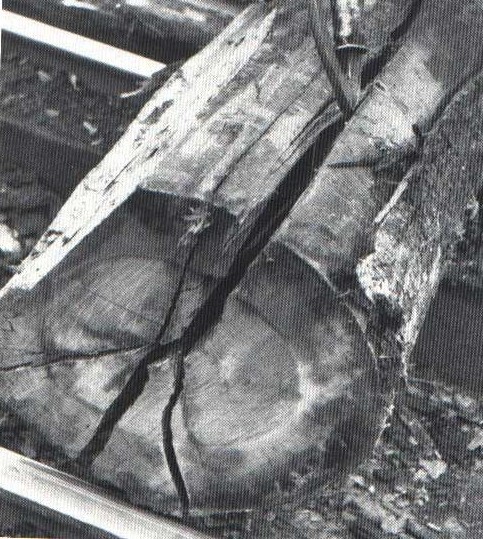
| Home |
| Tutorial |
| Photo Gallery |
| List of Defects |
| Links |
Significance: Superficial minor splits are disregarded
In veneer logs, splits are admitted to the heart center in the form of heart checks within a core- if the long axis is not more than 3 inches (7.6 cm) in logs that are 12 to 14 inches (30.5 to 35.6 cm) in diameter inside bark; not more than 4 inches (10.2 cm) in logs 15 inches (38.1 cm) in diameter inside bark; and not more thant 6 inches (15.2 cm) in logs 16 inches and larger diameter inside bark.
In factory logs, splits extending more than one-fifth the scaling diameter into the log are degraders even though the volume of lumber ruined is scaled out.
In construction logs, end splits that do not extend lengthwise more than 5 inches (12.7 cm) beyond the trimming allowance can be admitted. All other splits are degraders and can cause the log to be rejected for structural timbers, switchties, or crossties.
In standing trees, splits usually will not be visible. They might be present, extending downward from a fork in the tree stem. Otherwise, their presence can be predicted only from a knowledge of their occurrence with respect to species and area.
| Bark Distortion |
| Bird Peck |
| Bumps |
| Burls |
| Butt Scars |
| Butt Swells |
| Cankers |
| Conks |
| Epicormic Branches |
| Flanges |
| Flutes |
| Forks |
| Galls |
| Holes |
| Knots |
| Lesions |
| Limbs |
| Ring Shake |
| Rot |
| Seams |
| Soak |
| Splits |
| Wounds |

